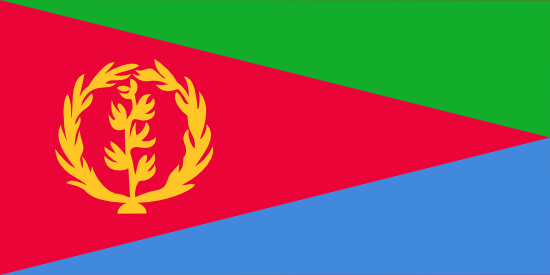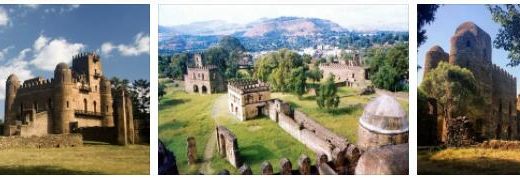Katharinenkloster (World Heritage)
The Katharinenkloster, fortified on Mount Sinai in the 6th century, has existed since the 3rd / 4th centuries. Century. Mount Sinai, also known as the Mount of Moses, is one of the central locations of the Old Testament. The monastery was fortified by Emperor Justinian I to protect monks and pilgrims. The Greek Orthodox Monastery is one of the oldest Christian monasteries in the world.
Catherine’s Monastery: facts
| Official title: | Catherine’s Monastery |
| Cultural monument: | Orthodox monastery built on Mount Sinai in the middle of the 6th century; holy mountain for Christians, Muslims and Jews; the Old Testament according to the place where the tablets of the Law were handed over to Moses; Mosque and “Chapel of the Burning Bush” (place of the bush of the Revelation of Yahweh as God of Israel) as the most important places; remarkable collection of ancient manuscripts and icons |
| Continent: | Africa |
| Country: | Egypt |
| Location: | Mount Sinai, near the city of Milga |
| Appointment: | 2002 |
| Meaning: | Exceptional example of ornate religious architecture and its integration into the natural environment; holy place for Christians, Muslims and Jews |
Holy place for three religions
“But on the third day, when morning came, there was thunder and lightning; heavy clouds lay on the mountain, and a mighty trumpet sounded […] Mount Sinai was completely shrouded in smoke because the Lord had descended on it in the fire […] and he called Moses to the summit. He went up and the Lord spoke to him. ”(Ex 19, 16-20) This is one of the central passages of the Old Testament: God reveals himself to Moses in a burning bush and gives him the ten commandments. Today there is a Greek Orthodox St. Catherine’s monastery at the place of the thorn bush at the foot of Mount Sinai (also Moses Mountain or Djebel Musa). In an area that is sacred to the three world religions Christianity, Judaism and Islam, it has been able to preserve a history of over 1700 years – just one reason.
Below Mount Sinai, the monastery sits enthroned on a plateau at a height of around 1570 meters, which, with its mighty walls up to 15 meters high, is reminiscent of a fortress. It was built from solid granite blocks from the area and is today an autonomous monastic republic of the Greek Orthodox Church. Inside, the structure resembles a labyrinth. There are nested corridors, buildings and stairs around the center, the three-aisled basilica with its 1450-year-old entrance gate. In the apse of the church is The Transfiguration of Jesus: a mosaic that shows Jesus with Moses and Elias, the twelve disciples and the twelve prophets and is considered one of the most beautiful works of art in the Christian world. The monastery was given its current name in the 15th century in honor of the martyr Catherine of Alexandria (3rd / 4th century), whose bones were supposedly carried by an angel to the nearby Katharinenberg. The Katharinenkloster on Mount Sinai is the oldest Christian monastery still in existence. Christians came to this inhospitable area as early as the 3rd century and sought protection from their persecutors. In 324 Helena, the mother of Emperor Constantine the Great, had a Lady Chapel built for her. The actual monastery with its fortified walls and its basilica was built between 533 and 565 under the Roman Emperor Justinian I.
The place where Moses received the Ten Commandments from God is one of the holiest places in Christianity and Judaism. The monastery also plays an important role in Islam, because the Prophet Mohammed stayed within its walls several times as a guest and promised the monks his special protection in a letter. This peaceful coexistence of religions is also evident in the close connection between the monastery and the Bedouins who live near it. 200 Bedouin families were brought from Anatolia by Eutychios, the patriarch of Alexandria, in the 9th century and settled in the area around the monastery to protect it. Over time, their descendants converted to Islam. Nevertheless, the Bedouins still take care of the numerous pilgrims who go to the holy mountain every year.
According to a2zgov, not only the Islamic prophet Mohammed guaranteed the Catherine’s monastery on Mount Sinai its continued existence, also numerous caliphs, Turkish sultans, Egyptian rulers and most recently Napoleon Bonaparte placed the monastery under their protection. In this way, not only the fellow believers but also the precious art treasures remained safe for centuries. To this day, the monastery has the most valuable collection of scripts in the world, alongside the Vatican: around 5,000 manuscripts are in its library, including 3,000 from antiquity. The most important work of the monastery was the Codex sinaiticus, the oldest, almost completely preserved Greek Bible manuscript (4th century). The manuscript was sent to the Russian tsar for research purposes in the 19th century, but was never returned. In 1933 Stalin sold it to the British Museum in London for £ 100,000, where it is still located. The most valuable book in St. Catherine’s Monastery is now the Codex syriacus, a Bible manuscript from the 5th century. In addition, the monastery has around 2000 icons, including some that survived the Byzantine iconoclasm unscathed in the 8th and 9th centuries and are therefore among the oldest icons in the world.



